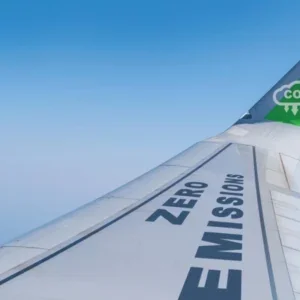On 25 April 2013, an 800-strong group of delegates converged on the Emperors Palace Hotel in the city of Ekurhuleni, South Africa, for the Airport Cities World Conference and Exhibition. The event’s main tenor focused on the concept of airport cities, proposing that metropolises of the future should position their airports not towards their peripheral hinterlands, but instead at their very core.
It was also notable for the presence of keynote speaker John Kasarda, professor of strategy and entrepreneurship at the University of North Carolina, and the progenitor of the ‘aerotropolis’ model – which is fast gaining ubiquity across the fields of aviation, urban planning and business.
Writer Will Self, reviewing Kasarda’s book, Aerotropolis: The Way We’ll Live Next in the London Review of Books in 2011, caustically deemed the vision a "red-eye flight to apocalypse"; the Guardian’s architecture critic Rowan Moore described it as "chilling".
London struggle
Yet, for these examples of opprobrium, Kasarda is not short on acolytes and disciples, including Mayor of London Boris Johnson. In February 2013, it was reported that Johnson had personally invited Kasarda to a meeting, co-held by members of the UK Airports Commission, to offer his input into the ongoing debate surrounding the capital’s airport capacity.
Kasarda is likely to have witnessed, at first hand, the impasse – based predominantly on high-politics and environmental concerns – which stymied a decision being made on whether to build a third airway at Heathrow Airport, the UK’s main international hub, or seek recourse elsewhere.
Last year, 70 million passengers passed through Heathrow; the Department for Transport anticipates that this could rise to 85 million by 2030. Long recognised as operating beyond its limits, such an uptick in volume would inevitably lead to extensive cancellations, delays and economic slippage.
Given the weight of the situation, such apparent dithering seems all the more disconcerting – Sir Howard Davies, chairman of the UK Airports Commission, has been instructed by the incumbent coalition government to defer his final report until after the 2015 general election.
On the other side of the globe, levels of investment in aviation and its supporting infrastucture are in rude health. Beijing is purported to have set almost $250 billion for China’s national airport scheme; and India is now home to Hyderabad International Airport – complete with a hospital and university campus – which was built in just 31 months. It currently serves 12 million passengers a year.
"The fuse is burning, so a decision needs to be made soon on the location of a single international hub for London," says Kasarda, speaking from China, where he has been delivering a series of lectures. "If not, competitor airports will continue to siphon global routes away at the city’s long-term economic peril."
Kasarda believes the only alternative would be to build an entirely new hub east of the capital on a greenfield site in the Thames Estuary, consisting of four runways and where an airport city could conceivably grow.
"Firstly, a four-runway airport is not an option for London, but a necessity if it is to meet its business needs," he says. "The impact of a hub located in the Thames Estuary is likely to be tens of billions of pounds annually, so the return on investment would be more than substantial."
Island in the stream
Foster + Partners has also thrown its hat in the ring. In early 2013, the firm confirmed that it would be submitting a proposal to the Airports Commission to construct the new hub in the Thames Estuary.
To be built on a platform on the Isle of Grain – located on the easternmost point of the Hoo Peninsula – Lord Foster claims the four-runway hub would have an initial capacity for 150 million passengers, with modular potential to expand to six runways in the future, if needed. The airport would also form part of a larger global transportation hub, comprising high-speed links not only into London, but also connecting the Midlands, and North and Continental Europe.
According to Huw Thomas, a senior partner at Foster + Partners, the project’s genesis, with its onus on interconnectivity and the promotion of trade links, was inspired by the recent revitalisation of the UK’s ports.
"If you are an island nation, your future is connectivity to the rest of the world," he explains. "Many don’t realise, but there has recently been a phenomenal amount of investment in our ports, such as Felixstowe, Southampton and the development of Liverpool 2.
"On a larger scale, an airport such as the one we are proposing in the Thames Estuary could bring similar activity to the economy as these ports have done, particularly to historic manufacturing centres and major cities."
Thomas is also quick to stress the benefits the project’s planned transport infrastructure would have not only for the capital, but also the rest of the country, maximising connectivity between the hub and other cities.
"An internal transportation system from the airport could alleviate the bottleneck that London presently is and give the rest of the country enormous opportunity," he says. "It’s smart logistics."
Thomas cites China, India and Latin America as "important touchstones when it comes to the future of global connectivity". On a metropolitan level, he is also familiar with the aerotropolis model.
"Yes, it partly drives the idea," he says. "There are obviously great economic benefits to things immediately adjacent to aviation. However, I would say that you still need to think about wider penetration on a national basis."
Asian aerotropolis
While arguments abound over the potential economic merits of constructing a new airport city, there are also question marks over how well a capital as historically and culturally entrenched as London would lend itself to an aerotropolis, particularly when held up against the current wave of pop-up towns and cities found across Asia.
Take New Songdo in South Korea, a city built from scratch next to Incheon International Airport, and a project in which Kasarda played an advisory role. Over the last decade, since its conception, it has added to its streets a phalanx of offices, apartments, shops and public spaces, not to mention a Jack Nicklaus-designed golf course. Meanwhile, Incheon has also become the world’s foremost duty-free airport and anticipates receiving 62 million passengers a year by 2018.
The business logic would appear to be sound, but, in turn, incites debate over civic purpose. Are the likes of New Songdo, created exclusively for capital gain, able to provide the kind of cultural fabric that gives each city its own unique identity?
The rendering of the aerotropolis found on Kasarda’s website includes an airport at its fulcrum, connected to surrounding public facilities, including a sports stadium, university campus and entertainment district, by a series of "aerolanes". But while Kasarda concedes "no aerotropolis will look exactly like this", some claim it smacks of cold and indistinguishable homogeneity. On visiting New Songdo, Richard Sennett, the centennial professor of sociology at the London School of Economics, decried it as a place where "there is nothing to be learned from walking the streets".
Economics and alternatives
Regarding London, cost and time would appear to be the overarching metrics. Building a new airport, complete with transport links, will cost in the region of £70 billion. A recent report by the Commons Transport Committee estimates that taxpayers would be required to foot up to £30 billion of the bill.
"Expensive as it might be, the potential returns outweigh the risks," says Kasarda. "A state-of-the-art airport, together with surrounding commercial development designed to aerotropolis principles would boost economic returns. The primary cost may not even be the airport per se, but the construction of ground transportation links to make it accessible on a time-cost basis to the region’s businesses and population."
Thomas adds: "The positive economics story hasn’t really come forward yet. But if you think that it has the potential to be Europe’s biggest, next-generation hub – that’s an extraordinary message to be putting out to the entire world."
Alternatives to building a new airport have also been mooted, including the creation of a spilt-hub policy with extra runways being spread across Gatwick and Stansted. Conversely, several factions believe such a strategy would compromise the capital’s direct connections to emerging market cities and support the idea of ‘one hub or nothing’.
A recent article in the Economist also posited the idea of expanding Heathrow, "not to its north, but to the west, by building up to four new runways over what is now a reservoir".
If the Davies commission chooses to review such a proposal, it would give an indication that Heathrow isn’t done for just yet, and that uprooting a location that has long contributed to the economy of the capital and the country could do more harm than good. The current debacle in Berlin, where interminable delays in replacing the city’s two existing airports with a new super hub, Berlin Brandenburg International – and which have resulted in budget overruns and national embarrassment – might serve as a good lesson on that front.
Thomas concedes: "No matter what the project is, it will always have dramatic impact on the lives of people who live in close proximity."
Meanwhile, residents living in the Thames Estuary continue to vociferously deny the legitimacy of a new transportation hub, citing that up to 20,000 homeowners would be displaced, not to mention the detrimental effect it would have on the area’s ecosystem. Thomas refutes the claim, arguing that "no more than 1,300 people would lose their homes and that the project would be conducted with environmental awareness in mind".
At the time of writing, there are also varying reports on how long such a project would take to complete. Foster + Partners estimate seven years; detractors, including Sir Richard Branson, believe it would be closer to 20.
Follow the leaders
If there are concerns over the UK falling by the wayside in the face of Asia’s inexorable investments in aviation, it also needs to look closer to home. On the continent, Amsterdam Airport Schiphol – which now has a turnover of approximately 50 million passengers each year – threatens to surpass Heathrow. Similarly, Frankfurt Airport has also made considerable investments in its adjacent real estate, with KPMG recently moving some of its operations to its ‘Squaire’ office complex.
"Cities like Amsterdam, Frankfurt and Paris already recognise the strategic importance of global hubs to create jobs and foster economic growth," says Kasarda. "That goes not just for their airport region, but also for entire nations. These places continue to apply the airport city and aerotropolis models effectively, to generate economically efficient, attractive and sustainable development, appealing to foreign investment and existing firms."
Kasarda commonly draws comparisons between the aerotropolis, and how towns and cities of the last two centuries have sprung up around railways and highways – predicated entirely on accessibility rather than location. For the 21st century, he claims, aviation hubs will lead the way.
In terms of enterprise and business, this may well be the case. But whether people are prepared to relocate and be genuinely "happy to live 15 minutes from an airport" – be it in London or Ekurhuleni – might be a harder idea to sell






